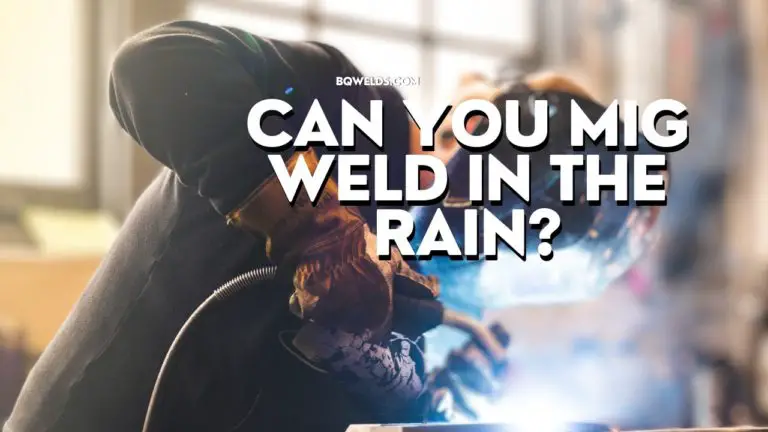The last thing you want when working is for inclement weather to hamper your progress. But what happens if it rains while you’re out fixing something? Can you MIG weld in the rain, and is there any way that doing so could be safe?
In this article, we’ll look at everything from potential risks involved to best practices for staying safe in these kinds of scenarios.
Let’s MIG it, shall we?
To answer the question,
No, we don’t recommend MIG welding in the rain. Working in wet conditions can lead to serious accidents, poor-quality welds, and equipment damage.
Why is it Dangerous to MIG Weld in the Rain?
The process of MIG (Metal Inert Gas) welding involves the use of electricity to heat and join metals. As we all know, water and electricity are a dangerous combination. When welding in the rain, there’s a substantial risk of electric shock.
This is because the rainwater can act as a conductor, allowing the electricity from the welding machine to pass through you. Even a small shock can lead to severe injury or even prove fatal.
Moreover, water from rain can also significantly impact the quality of the weld. Moisture in the air or on the metal surface can contaminate the weld pool and lead to defects such as porosity (tiny holes in the weld), weakening the structural integrity of the joint.
So, while it might seem like an efficient use of time to continue welding in the rain, the risks far outweigh the benefits. It’s always advisable to wait for dry conditions before you resume any welding work.
Safety should always be the priority when it comes to such high-risk tasks.
Disadvantages of welding in the rain
In addition to the considerable safety risks, welding in the rain also presents a number of other disadvantages:
- Poor Quality Welds: As mentioned earlier, moisture can contaminate the weld pool and lead to defects. Rain increases the moisture content in the air and on the metal’s surface, thereby negatively affecting the quality and strength of the welds.
- Increased Equipment Wear: Welding equipment is not designed to be used in wet conditions. Over time, exposure to rain can lead to rusting and degradation of the welding machine and other tools. This could result in unexpected equipment failure, costly repairs, or replacements.
- Limited Mobility: The combination of rain and welding gear can make navigating your workspace difficult. Slick, wet surfaces increase the risk of slipping or falling, adding another layer of danger to an already high-risk task.
- Impaired Visibility: Rain can compromise your visibility while welding. Wet welding helmets or masks can fog up, and rain can obscure your view of the weld pool, making it much harder to produce good-quality welds.
All these factors make welding in the rain a highly disadvantageous practice.
Read This
If you find yourself in a situation where you have limited time and absolutely must weld in damp or rainy conditions, there are some precautions you can take.
N.B – We strongly recommend that you POSTPONE the job – your safety is paramount.
- Use a Welding Tent or Shelter: If possible, set up a waterproof shelter or canopy over your workspace. This keeps the rain off your equipment and the metal you’re working on, reducing the risk of electrical shock and improving weld quality. Learn More
- Dry Your Equipment: Keep your welding equipment as dry as possible. Regularly wipe down your tools and workspace to remove any excess moisture.
- Wear Appropriate Gear: Ensure you have waterproof, non-conductive safety gear. This includes a high-quality welding helmet, rubber-soled boots, and insulated gloves. Your clothing should be dry, fit well, and cover your entire body to protect you from potential shocks and burns.
- Check Grounding: Proper grounding is crucial when welding, and even more so in wet conditions. Make sure your welder is grounded to a dry, clean surface away from the work area.
- Stay Alert: Be aware of your surroundings and the conditions of both your equipment and the weather. If conditions worsen or you feel unsafe, stop working.
- Don’t stand in puddles. It would be best if you got plywood and rubber mats to stand on, which will offer added insulation.
In Conclusion
In conclusion, MIG and Stick welding in the rain is not recommended due to significant safety risks and potential negative impacts on weld quality. It’s always best to wait for dry conditions before resuming any welding work. However, if you must work in wet conditions, take necessary precautions to keep yourself and your equipment safe. Remember, safety should always be the top priority when it comes to welding – never compromise it for efficiency or convenience.


Add comment